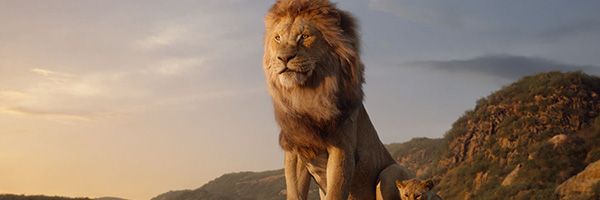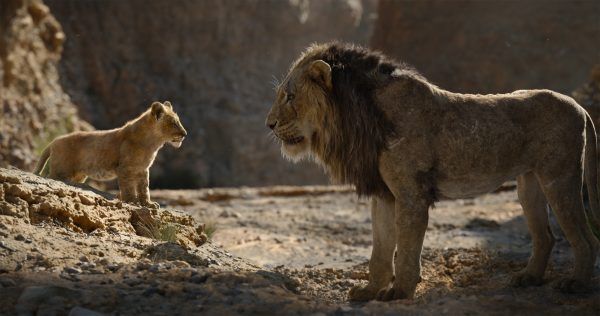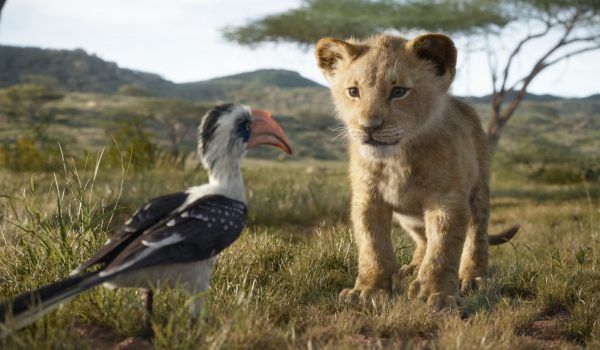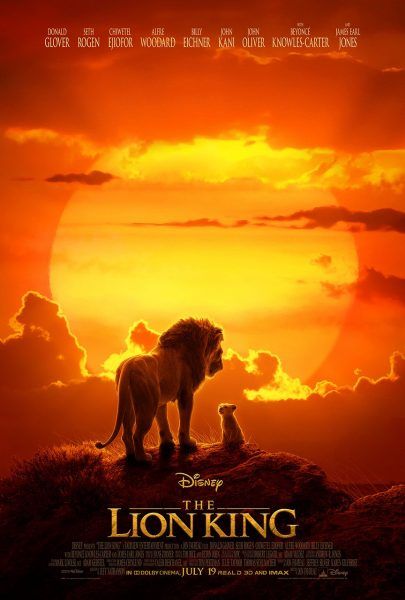As Disney continues to burn through its catalogue of animated classics, they’ve failed to justify why these new versions need to exist beyond “IP is a low-risk, high-reward way to cash in on nostalgia and brand recognition.” These movies make a lot of business sense, but as far as an artistic justification, there’s not much there for Beauty and the Beast, Aladdin, and now Jon Favreau’s photoreal adaptation of The Lion King. The template for these movies seems to be to deviate as little as possible from the original narrative right down to dialogue inflection and shot composition, add in a couple of scenes that will appease people who make obnoxious YouTube videos about the original’s “flaws”, and lard it up with expensive CGI. The Lion King hopes to stand apart by resting on its technical achievements, but the photorealism ends up being both the film’s greatest strength, and its greatest weakness. The few moments where the film is able to break free and show some spontaneity, like in the scenes with Timon and Pumbaa, are when it comes alive. But these moments are few and far between as Favreau treats the original like holy writ minus the theatricality the story requires.
In case you haven’t seen the 1994 original, the story is exactly the same. Simba (JD McCrary) is a lion cub living on Pride Rock, and he’s the son of the land’s ruler, Mufasa (James Earl Jones). Simba thinks being king is all fun and getting to do whatever you want, but Mufasa tries to teach him about responsibility and the “Circle of Life”, which means living in balance with nature. However, Mufasa’s brother Scar (Chiwetel Ejiofor), has his eye on the throne, and hatches a plot to steal it. This eventually forces Simba into exile where he becomes an adult (Donald Glover) with his carefree pals Timon (Billy Eichner), a meekrat, and Pumbaa (Seth Rogen), a warthog. However, Simba’s old friend Nala (Beyoncé Carter-Knowles) finds him and tries to get him to come home, challenge Scar, and assume his rightful place as king.
The Lion King, for all intents and purposes, is a melodrama. It has shades of Hamlet, and it wrestles with weighty themes like destiny and legacy. Unfortunately, the photoreal approach makes it feel like a Disneynature movie that happens to have celebrity voices. On the one hand, the photorealism is a technical landmark. You have to keep reminding yourself that none of this stuff is there, and at the very least, The Lion King pushes the ball forward on what we can do with CGI and especially VR since VR was used to bring the camera operators into the virtual space of the Pridelands. If The Lion King wins the Oscar for Best VFX, it will probably deserve it on the technical merits of what they accomplished.
And yet VFX are supposed to help tell the story, and here they clearly hinder it. The emphasis on photorealism means you lose the dramatic flourishes and theatricality the movie needs to thrive. For example, lions don’t have a lot of facial expressions. They’re not like apes where you can get a lot from their faces. While Favreau leans hard on vocal performances and Hans Zimmer’s masterful score to convey the emotions of the scene, he can’t change the fact that Simba’s face at his saddest looks a lot like Simba at his happiest.
The film also suffers from being far too reliant on the original so that it never finds its own purpose to exist outside the photorealism. The best characters are the comic relief ones like Timon and Pumbaa because it’s clear the actors had room to play off each other and punch up the dialogue a bit. Their spontaneity is like water in the desert of worshiping the original while also missing exactly why that original works so well. You can have Donald Glover say all the lines from the original and have the CGI Simba go through all the movements, but it misses the nuance and style the original Disney animators brought to the 1994 movie.
The Lion King is slightly better than Beauty and the Beast and Aladdin if for no other reason it doesn’t feel too bloated and the additions largely make sense. Even the new song, “Spirit”, is well-placed in the narrative (as opposed to the record-scratch awkward placement of “Speechless” in Aladdin). But the film still suffers from failing to improve upon or significantly differ from its originator. Sure, you could argue that this will “introduce” The Lion King to a new generation, but that assumes what kids today want are photorealistic animals with frozen faces rather than 2D animation that can emote and conjure feelings. And maybe that’s true. Beauty and the Beast made $1.2 billion and Aladdin has earned $925 million so far. That’s great if you’re a Disney shareholder. It’s a bummer if you’d like to see the wealthiest studio do more than regurgitate its IP with cutting-edge CG.
Rating: C




